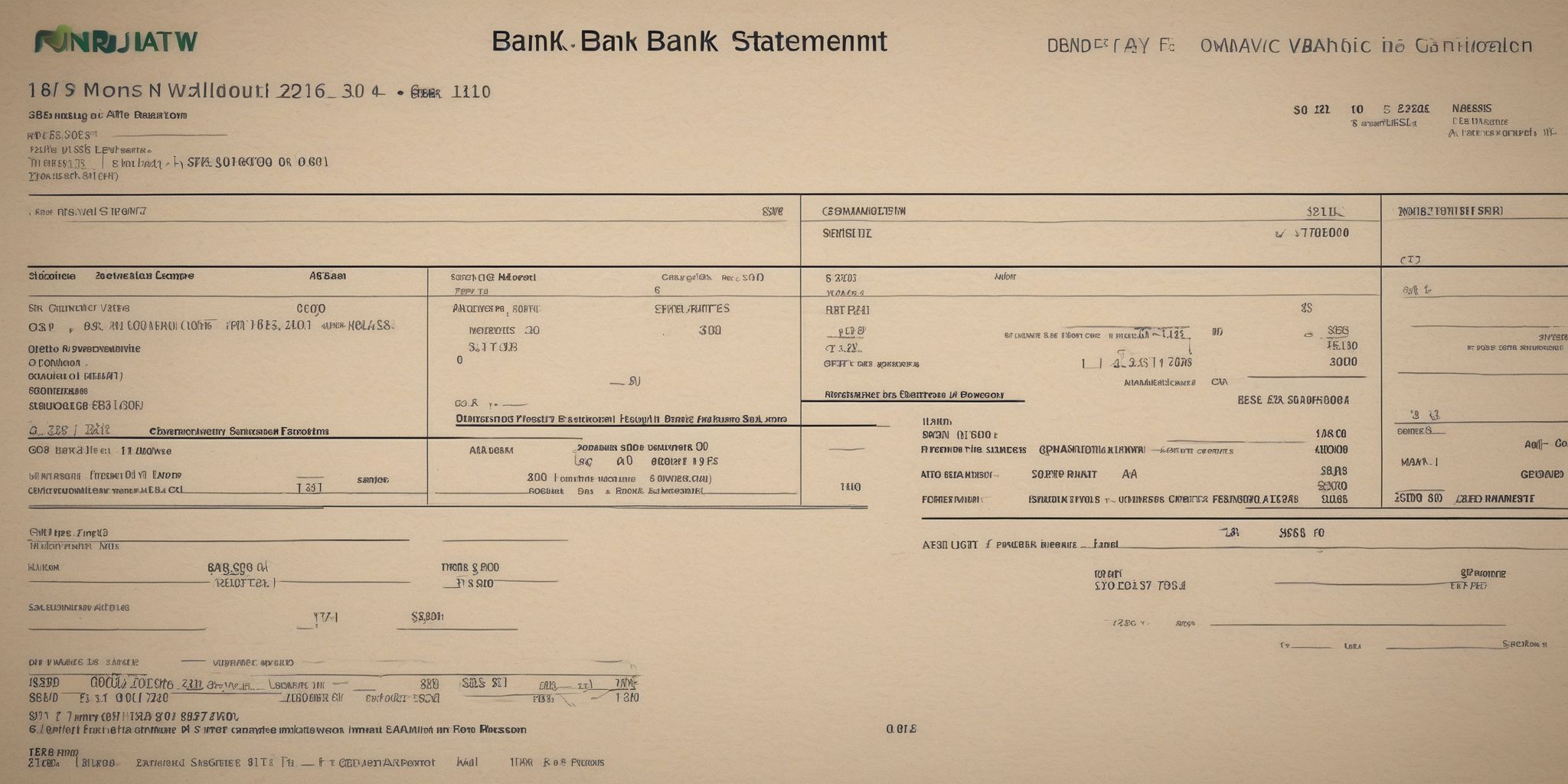The Rise of Banking Apps: Transforming the Traditional Financial Landscape
Over the past decade, banking apps have emerged as the unsung heroes of the financial world, revolutionizing the way we handle our money. Gone are the days of long queues, endless paperwork, and speaking to tellers behind thick glass windows. With just a few taps on our smartphones, we can now manage our finances anytime, anywhere.
This digital disruption has not only transformed the traditional banking landscape but also empowered individuals to take control of their financial lives like neverbefore. So, let’s dive into the captivating world of banking apps and explore the remarkable ways they have shaped the way we bank and manage our money.
The Traditional Banking Landscape
Challenges of Traditional Banking
Traditional banking faces several challenges in today's digital landscape. One key challenge is the limited accessibility and convenience for customers. Physical branch visits, fixed operating hours, and long wait times hinder seamless banking experiences. Another challenge is the lack of personalized services. Traditional banks often struggle to provide tailored financial solutions and personalized recommendations to their customers.
Lastly, outdated security measures pose a risk to customers'sensitive information. These challenges highlight the need for banking apps, which address these issues by offering 24/7 access, personalized features, and advanced security measures. Banking apps enable customers to conveniently manage their finances, access personalized recommendations, and ensure the security of their transactions.
Role of Technology in Banking
The rapid advancement of technology has revolutionized the banking industry. Banking apps, in particular, have played a transformative role in enhancing the customer experience. These apps leverage the power of smartphones to provide convenient access to a range of banking services anytime, anywhere. With features like mobile check deposits and instant transfers, they have simplified routine tasks and eliminated the need for physical branch visits.
Additionally, the integration of cutting-edge technologies like biometrics and AI-powered chatbots has improved security measures and personalized financial assistance. By harnessing technology, banking apps have made financial management more effortless and efficient for users worldwide.
Banking Apps: A Game Changer
Definition and Features of Banking Apps
Banking apps are mobile applications that allow users to access and manage their financial accounts from their smartphones or tablets. These apps provide a range of features, including the ability to check account balances, transfer funds, pay bills, and even apply for loans.
Additionally, they offer personalized user experiences, with features such as budgeting tools, spending insights, and real-time notifications for transactions. Banking apps have revolutionized the way people interact with their finances, providing convenience, accessibility, and improved control over their money. With the increasing number of smartphone users worldwide, banking apps have become a popular choice for individuals seeking seamless and efficient banking services on the go.
Convenience and Accessibility
Convenience and accessibility are fundamental advantages offered by banking apps. By providing users with the ability to carry out banking transactions on their smartphones or tablets, these apps simplify the process and save valuable time. Whether it's transferring funds, paying bills, or checking account balances, users can perform these tasks from anywhere at their convenience.
With features like mobile check deposits and digital wallets, banking apps have revolutionized the way users interact with their finances. This accessibility empowers individuals to stay on top of their financial activities and make informed decisions in real-time, ultimately enhancing their overall banking experience.
Personalized Digital Experience
Banking apps offer a personalized digital experience, tailored to individual user preferences. Through personalized features and functionalities, these apps provide a seamless and customized banking experience. Users can personalize their dashboard, set up notifications and alerts, and access targeted financial insights.
For example, the app may analyze spending patterns to offer personalized budgeting tips or recommend suitable financial products based on user profiles. By catering to individual needs, banking apps enhance user engagement and satisfaction. This personalized experience not only improves the user's financial well-being but also fosters a deeper connection between the user and the app.
Advanced Security Measures
Advanced security measures are a fundamental aspect of banking apps. Encryption technology is employed to protect sensitive data, ensuring secure communication between the app and the user's device.
Additionally, biometric authentication methods such as fingerprint or facial recognition provide an extra layer of security for accessing accounts. Multi-factor authentication, where users need to provide multiple credentials to log in, adds another level of protection against unauthorized access. Regular security updates and monitoring help identify and address potential vulnerabilities. To further enhance security, some banking apps offer features like remote data wiping in case of a lost or stolen device. These measures ensure that users can confidently conduct their financial transactions without compromising their personal information.
Growth and Adoption of Banking Apps
The growth and adoption of banking apps have been significant in recent years, transforming the way people manage their finances. Here are some insights on this trend:
- Mobile banking usage has witnessed a sharp rise, with users increasingly opting for the convenience of banking apps.
- According to industry statistics, a large percentage of smartphone owners now use mobile banking apps regularly.
- The success of popular banking apps can be attributed to their user-friendly interfaces and seamless functionalities.
- Customers appreciate the ability to perform various transactions, such as transferring funds, paying bills, and depositing checks, all from their mobile devices.
- Banking apps have also gained traction due to their real-time notifications and alerts, enabling users to stay updated on their accounts instantly.
Statistics on Mobile Banking Usage
Statistics on mobile banking usage demonstrate the significant adoption and reliance on banking apps. According to a recent study, over 70% of smartphone users have downloaded a banking app, indicating the widespread popularity of this digital banking method.
Additionally, mobile banking app usage has experienced consistent growth, with a 20% increase in app sessions compared to the previous year. This surge in usage highlights the convenience and accessibility that banking apps offer to users, enabling them to perform various financial transactions on the go. Moreover, the study reveals that the majority of users engage with their banking app at least once a week, emphasizing the app's integration into their daily financial activities.
Success Stories: Examples of Popular Banking Apps
The rise of banking apps has been driven by their ability to provide users with convenient and personalized financial services. Several banking apps have successfully capitalized on this trend, gaining widespread popularity among users. These apps offer features such as seamless account management, real-time transaction tracking, and easy money transfers. For instance, some banking apps provide advanced budgeting tools that help users track their expenses and set savings goals.
Additionally, others offer virtual cards for secure online shopping. The success of these popular banking apps demonstrates the growing demand for efficient and user-friendly digital financial solutions.
Benefits of Banking Apps for Users
- Convenient Banking Services on the Go: Banking apps enable users to access their accounts and complete transactions anytime, anywhere, eliminating the need to visit physical branches.
- Real-Time Notifications and Alerts: Users receive instant notifications about transactions, account balances, and payment reminders, helping them stay informed and in control of their finances.
- Efficient Money Management Tools: Banking apps provide features to track expenses, set savings goals, and create budgets, empowering users to manage their finances effectively.
- Seamless Integration with Other Financial Services: Users can easily link their banking app with other financial apps or services, such as budgeting apps or investment platforms, for a holistic financial management experience.
- Enhanced Security Measures: Banking apps prioritize the security of user data by implementing robust encryption, two-factor authentication, and biometrics, ensuring safe and protected financial transactions.
These benefits make banking apps a valuable tool for users, providing convenience, control, and security in managing their finances.
Convenient Banking Services on the Go
Banking apps provide users with convenient banking services right at their fingertips. With these apps, customers can easily perform various transactions, such as transferring funds, paying bills, and checking their account balance, without the need to visit a physical branch or wait in long queues. This level of accessibility allows users to manage their finances efficiently, saving valuable time and effort.
Additionally, banking apps often offer features like mobile check deposit and card controls, enabling users to deposit checks and control their card settings directly through their smartphones. This convenience empowers users to take control of their financial matters anytime and anywhere, ensuring a seamless banking experience.
Real-Time Notifications and Alerts
Real-Time Notifications and Alerts in Banking Apps
- Real-time notifications and alerts on banking apps have revolutionized how customers stay informed about their financial activities.
- Users receive instant updates on transactions, account balances, payment reminders, and suspicious activities, ensuring that they remain in control of their finances.
- These notifications help users manage their funds more effectively, avoid potential overdrafts or late payment fees, and take prompt action in case of fraudulent activities.
- For example, a user can receive an alert when their account balance falls below a specified threshold, allowing them to plan their expenditure accordingly.
- Real-time notifications and alerts enhance financial transparency, provide peace of mind, and empower users to make timely and informed decisions about their money.
Efficient Money Management Tools
Efficient money management tools offered by banking apps empower users to effortlessly track and control their finances. These tools provide a comprehensive overview of income, expenses, and savings, allowing individuals to set budgets and financial goals. Users can categorize transactions, analyze spending patterns, and receive personalized insights to make informed financial decisions.
Additionally, some banking apps offer features like bill payment reminders, automatic savings plans, and investment tracking. These tools streamline financial management, saving users time and effort that would otherwise be spent manually tracking and organizing finances. With access to these powerful tools at their fingertips, individuals can take control of their financial well-being and make smarter financial choices.
Impact on the Financial Industry
Disruption of Traditional Banking Model
The rise of banking apps has disrupted the traditional banking model. Customers no longer need to visit physical bank branches or rely solely on online banking platforms. With banking apps, users can conveniently manage their finances anytime, anywhere. These apps provide a seamless digital experience, offering features like real-time balance updates, instant fund transfers, and easy bill payments.
Additionally, banking apps have prompted traditional banks to innovate and improve their services to stay competitive in the market. This disruption has led to a more customer-centric approach, where banks prioritize user experience and offer more personalized and efficient banking solutions.
Increased Competition and Innovation
- Banking apps have sparked a wave of competition in the financial industry, pushing traditional banks to adapt and innovate.
- Traditional banks are now challenged to provide the same level of convenience, accessibility, and personalized experiences offered by banking apps.
- This competition has led to the development of new features and services, such as mobile payments, budgeting tools, and AI-powered financial assistants.
- Fintech startups have also emerged, disrupting the market with innovative solutions that prioritize user experience, efficiency, and cost-effectiveness.
- The intense competition among banks and fintech companies has ultimately benefited consumers, as they now have more options and improved financial services at their fingertips.
Transformation of Customer Experience
Banking apps have revolutionized the way customers interact with financial institutions. With these apps, users can access their accounts anytime and anywhere, making banking more convenient than ever. The ability to perform transactions, transfer funds, and pay bills with just a few taps on a smartphone has significantly improved customer satisfaction.
Additionally, banking apps provide real-time notifications and alerts, keeping customers informed about their account activities and helping them stay on top of their finances. The personalized digital experience offered by these apps allows customers to customize their settings, set financial goals, and receive tailored recommendations, empowering them to make more informed financial decisions. This level of convenience and personalization has transformed the customer experience, fostering greater engagement and loyalty.
Improved Customer Satisfaction
Banking apps have revolutionized the way customers interact with their financial institutions, resulting in heightened levels of customer satisfaction. These apps offer a seamless and user-friendly interface, allowing customers to perform various banking tasks at their convenience. With features like real-time transaction updates, personalized notifications, and easy access to account information, customers feel more empowered and in control of their finances.
Additionally, banking apps often incorporate feedback mechanisms to gather customer insights and continuously improve the user experience. These advancements in customer-centric technology have led to greater satisfaction, as customers can quickly and smoothly manage their banking needs with just a few taps on their smartphones.
Enhanced Financial Inclusion
Banking apps have significantly contributed to improving financial inclusion by providing access to banking services for underserved populations. These apps allow individuals without traditional bank accounts to open digital wallets or mobile banking accounts easily. Such accessibility enables them to conduct various financial transactions, including making payments, transferring funds, and accessing loans or insurance services.
Additionally, banking apps offer language support, simplified interfaces, and educational resources to cater to diverse users.
As a result, people in remote areas or from economically disadvantaged backgrounds can now participate in the formal financial system, empowering them to save, invest, and build a better financial future.
Future Trends and Challenges
Technological Advancements in Banking Apps
Technological advancements have revolutionized banking apps, offering users more innovative and efficient ways to manage their finances. Artificial intelligence and machine learning are now utilized to provide personalized financial recommendations based on users' spending habits and financial goals.
Additionally, the integration of blockchain technology ensures secure and transparent financial transactions. These advancements enable users to have real-time access to their account information, make seamless mobile payments, and even receive customized budgeting tips.
As a result, banking apps have transformed into comprehensive financial management tools, empowering individuals to take control of their finances with ease and convenience.
Artificial Intelligence and Machine Learning
Artificial Intelligence (AI) and Machine Learning (ML) are revolutionizing the banking app industry. AI-powered algorithms analyze vast amounts of data to offer personalized financial insights. Through ML, banking apps can improve fraud detection by identifying irregular patterns of transactions. AI chatbots provide instant customer support, enhancing user experience.
Furthermore, AI algorithms can analyze spending patterns to provide budgeting suggestions and help users make informed financialdecisions.
For example, AI can categorize expenses automatically and provide recommendations for cost-cutting measures. The integration of AI and ML in banking apps ensures users benefit from advanced financial intelligence and convenient assistance.
Blockchain Technology in Financial Transactions
Blockchain technology has emerged as a game-changing solution in financial transactions within the context of banking apps. Its decentralized and transparent nature enhances security and trust in digital transactions. By utilizing blockchain, banking apps can provide users with faster, more secure, and cost-effective transactions.
For example, the technology enables real-time transfers and reduces the need for intermediaries. Moreover, blockchain ensures the immutability of transaction records, minimizing the risk of fraud or tampering.
As a result, users can enjoy seamless and reliable financial transactions while leveraging the benefits of blockchain's decentralized architecture.
Regulatory and Security Concerns
- Compliance with regulatory requirements is a significant challenge for banking apps. Ensuring adherence to anti-money laundering (AML) and Know Your Customer (KYC) regulations is crucial to prevent illegal activities.
- Data privacy and protection are paramount to build trust with users. Robust encryption, secure authentication methods, and regular security audits are essential to safeguard sensitive customer information.
- Cybersecurity risks pose a constant threat to banking apps. Implementing multi-factor authentication, detecting and mitigating fraudulent activities, and staying updated with the latest security protocols are crucial to protect against unauthorized access and data breaches.
- Collaboration with regulatory bodies and industry-wide sharing of best practices can help banking apps navigate the evolving landscape of regulatory and security requirements effectively.
Data Privacy and Protection
Data privacy and protection are significant concerns in the realm of banking apps. With the sensitive nature of financial information, ensuring the security of user data is of utmost importance. Robust encryption protocols and secure authentication methods are employed by reputable banking apps to safeguard customer details. Regular software updates and security audits keep vulnerabilities in check.
Additionally, implementing two-factor authentication adds an extra layer of protection against unauthorized access. Users are encouraged to enable automatic app updates and avoid sharing personal information through unsecured channels to further enhance their data security. By prioritizing data privacy, banking apps establish trust and instill confidence in their users.
Cybersecurity Risks
When it comes to banking apps, cybersecurity risks are a significant concern. With the increasing reliance on digital platforms for financial transactions, hackers and cybercriminals are constantly searching for vulnerabilities. One common risk is phishing attacks, where users are tricked into revealing sensitive information through fraudulent emails or messages. Another risk is malware, which can infiltrate devices and steal personal data.
To mitigate these risks, banking apps should invest inrobust encryption protocols and two-factor authentication.
Additionally, users should be educated about safe online practices and encouraged to regularly update their app and device security settings. Vigilance and proactive security measures are crucial in safeguarding users' financial information.
Final thoughts
Banking apps have revolutionized the financial industry, transforming the traditional landscape of banking. With the rise of smartphones and technology, more and more people are gravitating towards the convenience and accessibility offered by these apps. They allow users to easily manage their finances, make transactions, and access a wide range of banking services, all from the comfort of their mobile devices.
This shift towards mobile banking has forced traditional banks to adapt and invest in their own mobile platforms to compete with fintech startups.
Additionally, these apps have opened up banking services to previously underserved populations, providing a convenient and secure way to access financial products and services. While concerns regarding security and data privacy persist, the convenience and ease of use offered by banking apps continue to drive their popularity and reshape the financial landscape.


